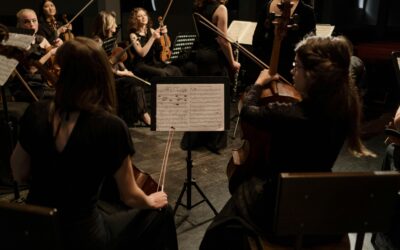Understanding the Layout of the Orchestra: A Composer’s Guide
When writing for orchestra, it helps to understand not just which instruments are available—but where they typically appear on the page. While the exact lineup can change from one composer to the next, orchestras are generally grouped into four main families: woodwinds, brass, percussion, and strings. Instruments within each family are listed from highest to lowest in pitch.
The following layout reflects a standard full orchestral score. Think of it as a starting point—ideal for extended orchestras, with the flexibility to adapt based on the size and style of the piece you’re writing.
Woodwinds
- Piccolo
- Flute 1, 2
- *Alto Flute (optional)
- Oboe 1, 2
- English Horn (Cor Anglais)
- Clarinet in E♭ or A♭
- Clarinet in B♭ 1, 2
- Bass Clarinet
- Bassoon 1, 2
- Contrabassoon
Brass
- French Horns 1, 2
- French Horns 3, 4
- Trumpet in B♭ 1, 2
- Trumpet in B♭ 3
- Trombones 1, 2
- Bass Trombone (Trombone 3)
- *Euphonium (optional)
- Tuba
Percussion
- Timpani
- Xylophone
- Triangle
- Snare Drum
- Harp
- Piano
Strings
- *Choir (if included, typically notated above the strings)
- Violins I
- Violins II
- Viola
- Cello (Violoncello)
- Double Bass
Other Instrument Considerations
If your composition includes instruments outside the traditional orchestral lineup—like synthesizers, ethnic percussion, or electric guitar—consider the following guidelines:
- Percussive instruments (non-pitched or rhythmic) are usually notated above the harp.
- Melodic instruments (with defined pitch) are generally placed above the strings, often just beneath the piano or harp.
- Choirs are most commonly notated just above the string section, unless the piece is choral-dominant.
A Flexible Framework
This orchestral layout isn’t a rigid rule—it’s a well-established starting point. Some composers adjust the order to suit the focus of their piece, especially in modern, cinematic, or minimalist works. The goal is always clarity: helping the conductor, performers, and copyists follow your intent.






